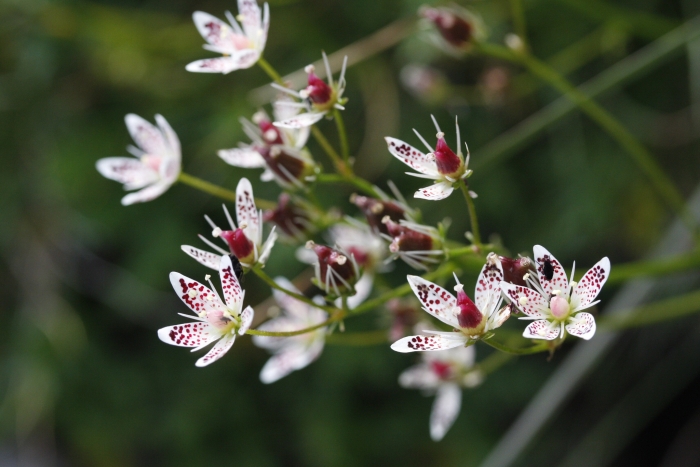Round-Leaved Saxifrage
(Saxifraga rotundifolia)
Round-Leaved Saxifrage (Saxifraga rotundifolia)
/
/

Skjold Søndergaard
CC BY 4.0
Image By:
Skjold Søndergaard
Recorded By:
Copyright:
CC BY 4.0
Copyright Notice:
Photo by: Skjold Søndergaard | License Type: CC BY 4.0 | License URL: http://creativecommons.org/licenses/by/4.0/ | Rights Holder: Skjold Søndergaard | Publisher: iNaturalist | Date Created: 2019-08-08T13:52:12Z |

























Estimated Native Range
Summary
Saxifraga rotundifolia, commonly known as Round-leaved Saxifrage, is a perennial herb native to the mountainous regions of central and southern Europe, including the Iberian Peninsula, Alps, and Balkans. It thrives in the cool, moist microclimates of shady forests, damp areas, rocky cliffs, and stream margins at elevations between 2297-7218 feet (700-2200 meters). This plant typically grows to a height of 8-20 inches (20-50 cm) and features a basal rosette of dark green, rounded leaves. From April to August, it produces star-shaped white flowers with distinctive pink-purple specks, which are moderately showy and attract pollinators.
Round-leaved Saxifrage is valued for its ability to grow in shady and moist conditions, making it an excellent choice for rock gardens, woodland gardens, and as ground cover in shaded areas. It is relatively easy to maintain, requiring minimal care once established. Gardeners appreciate its extended flowering season and the textural contrast its foliage provides. For successful cultivation, it requires consistently moist soil with good drainage and prefers part shade to full shade. While generally disease-free, it can be susceptible to root rot if overwatered or planted in poorly drained soils. It is not known for being invasive and does not typically present problems with aggressive roots or other undesirable traits.CC BY-SA 4.0
Round-leaved Saxifrage is valued for its ability to grow in shady and moist conditions, making it an excellent choice for rock gardens, woodland gardens, and as ground cover in shaded areas. It is relatively easy to maintain, requiring minimal care once established. Gardeners appreciate its extended flowering season and the textural contrast its foliage provides. For successful cultivation, it requires consistently moist soil with good drainage and prefers part shade to full shade. While generally disease-free, it can be susceptible to root rot if overwatered or planted in poorly drained soils. It is not known for being invasive and does not typically present problems with aggressive roots or other undesirable traits.CC BY-SA 4.0
Plant Description
- Plant Type: Herb
- Height: 0.5-1 feet
- Width: 0.5-1 feet
- Growth Rate: Slow
- Flower Color: White
- Flowering Season: Summer
- Leaf Retention: Evergreen
Growth Requirements
- Sun: Full Sun, Part Shade
- Water: Medium
- Drainage: Medium
Common Uses
Border Plant, Low Maintenance, Rock Garden
Natural Habitat
Mountainous regions of central and southern Europe, including shady forests, damp areas, rocky cliffs, and stream margins
Other Names
Common Names: Round-Leaf Saxifrage, Alpine Saxifrage
Scientific Names: , Saxifraga rotundifolia, Saxifraga fragilis, Saxifraga fragilis,
GBIF Accepted Name: